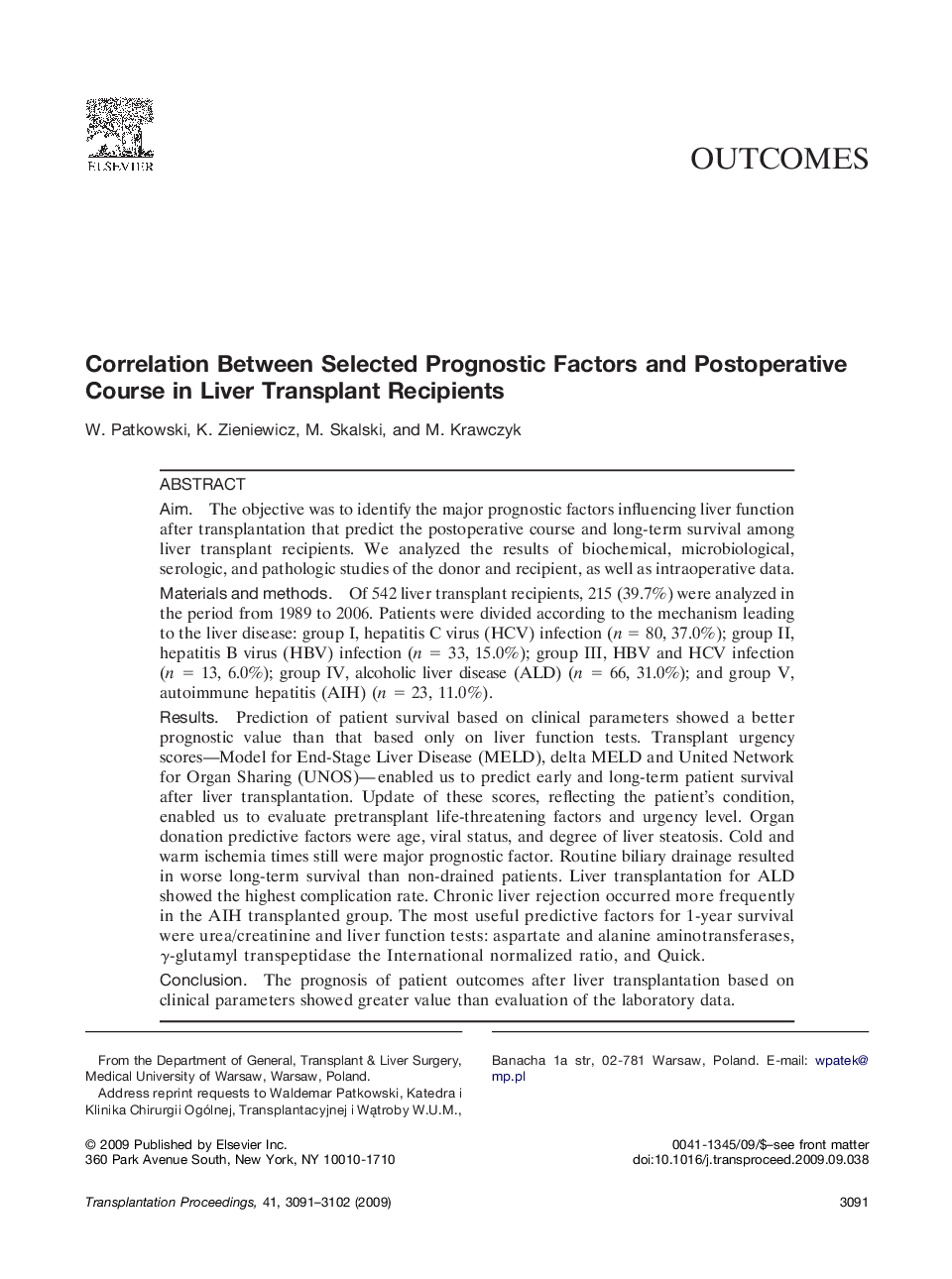| کد مقاله | کد نشریه | سال انتشار | مقاله انگلیسی | نسخه تمام متن |
|---|---|---|---|---|
| 4258997 | 1284565 | 2009 | 12 صفحه PDF | دانلود رایگان |

AimThe objective was to identify the major prognostic factors influencing liver function after transplantation that predict the postoperative course and long-term survival among liver transplant recipients. We analyzed the results of biochemical, microbiological, serologic, and pathologic studies of the donor and recipient, as well as intraoperative data.Materials and methodsOf 542 liver transplant recipients, 215 (39.7%) were analyzed in the period from 1989 to 2006. Patients were divided according to the mechanism leading to the liver disease: group I, hepatitis C virus (HCV) infection (n = 80, 37.0%); group II, hepatitis B virus (HBV) infection (n = 33, 15.0%); group III, HBV and HCV infection (n = 13, 6.0%); group IV, alcoholic liver disease (ALD) (n = 66, 31.0%); and group V, autoimmune hepatitis (AIH) (n = 23, 11.0%).ResultsPrediction of patient survival based on clinical parameters showed a better prognostic value than that based only on liver function tests. Transplant urgency scores—Model for End-Stage Liver Disease (MELD), delta MELD and United Network for Organ Sharing (UNOS)—enabled us to predict early and long-term patient survival after liver transplantation. Update of these scores, reflecting the patient's condition, enabled us to evaluate pretransplant life-threatening factors and urgency level. Organ donation predictive factors were age, viral status, and degree of liver steatosis. Cold and warm ischemia times still were major prognostic factor. Routine biliary drainage resulted in worse long-term survival than non-drained patients. Liver transplantation for ALD showed the highest complication rate. Chronic liver rejection occurred more frequently in the AIH transplanted group. The most useful predictive factors for 1-year survival were urea/creatinine and liver function tests: aspartate and alanine aminotransferases, γ-glutamyl transpeptidase the International normalized ratio, and Quick.ConclusionThe prognosis of patient outcomes after liver transplantation based on clinical parameters showed greater value than evaluation of the laboratory data.
Journal: Transplantation Proceedings - Volume 41, Issue 8, October 2009, Pages 3091–3102